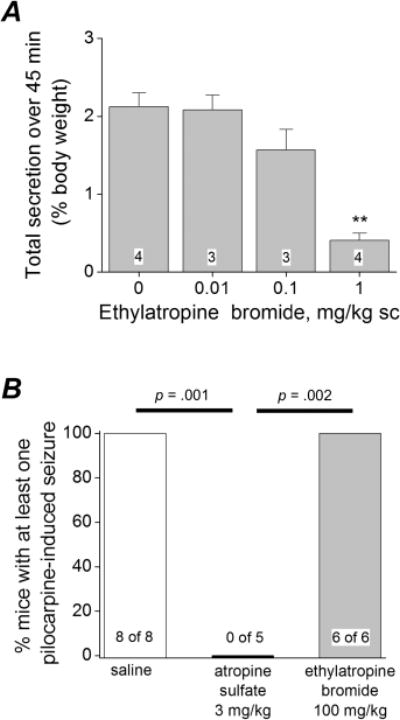Figure 3.

Ethylatropine bromide attenuates pilocarpine-induced secretions. (A) Total secretions (salivation, urination, and diarrhea) were measured and used to indicate in vivo efficacy of ethylatropine bromide. Mice were administered saline or ethylatropine bromide followed by pilocarpine 25 min later. Total secretion was measured 45 min after pilocarpine and calculated as a percent of the animal’s initial body weight. Data are mean ± SEM for each group. The number in the white box within the bar represents the total number of mice within each group. **p < 0.01, one-way ANOVA with Dunnett’s posthoc test compared to saline. (B) Mouse behavior was scored using a modified Racine scale and the number of mice with at least one pilocarpine-induced seizure was determined. Mice were administered saline, ethylatropine bromide, or atropine sulfate followed by pilocarpine (278 mg/kg) 25 min later. Fisher’s exact tests were performed comparing saline and ethylatropine bromide to atropine sulfate.
